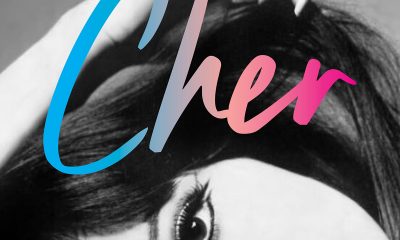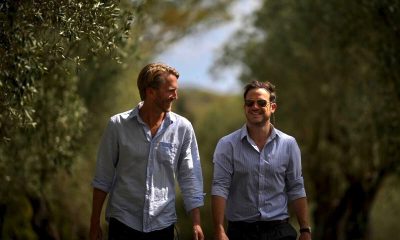Books
“Grace: Barack Obama and Ten Days in the Battle for America”
Obama speechwriter reflects on marriage, Charleston shooting in new book- Cody Keenan revisits 10 critical days from unique vantage point
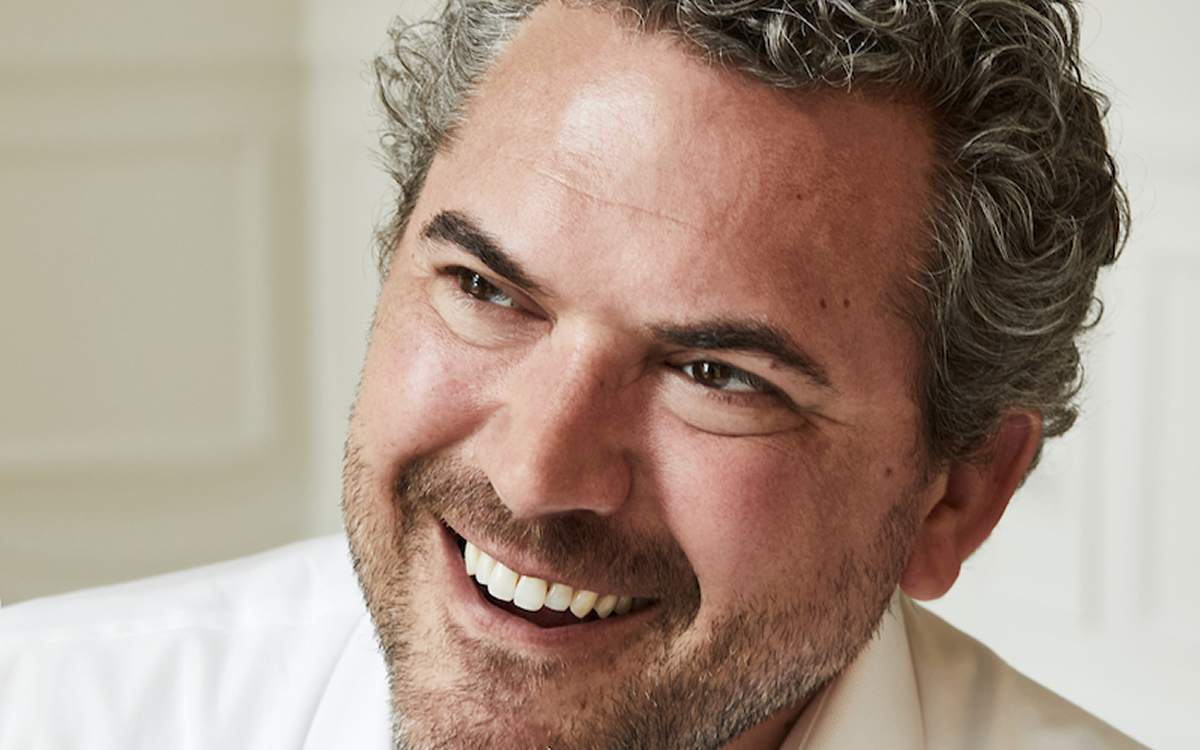
WASHINGTON – Cody Keenan, director of speechwriting for President Obama, had a prominent vantage point in the White House during an eventful 10 days that included recovery from a violent memory underscoring lingering issues with racism.
Those 10 days, which saw the U.S. Supreme Court ruling in favor of same-sex marriage and upholding Obamacare as well as Obama’s speech in the aftermath of a racist shooting at a Black church in Charleston, are now encapsulated in his new book, “Grace: Barack Obama and Ten Days in the Battle for America.”
The Washington Blade spoke with Keenan about his book in an interview on Tuesday that includes an exchange the author and this reporter shared from different perspectives during Obama’s speech in the Rose Garden after the Supreme Court’s ruling for same-sex marriage.
Read the full interview below:
Blade: Why was the time now for this book?
Cody Keenan: There’s a couple of reasons for that. No. 1 is sort of technical. I was still working for President Obama up until the beginning of 2021. And so I didn’t feel appropriate to start writing a book that’s largely about him as long as he was paying me. So that’s the technical answer.
The other is I’d just been rolling these 10 days around in my head for a while. You know, it doesn’t coalesce all at once. You don’t wake up in the morning after marriage equality and Charleston and say, “OK, I’m going to write a book.” It really took the Trump years to actually crystallize it in my head because suddenly we were living through the opposite. We come through this kind of amazing 10-day burst of progress. That, of course, is not limited to 10 days. It was a result of decades of effort, and then the backlash to it. It makes it seem all that more sharp.
Blade: I think our viewers are going to be very interested in the discussion on the marriage ruling and the potential outcomes that you depict in the book. Looks like there was a lot of anxiety behind closed doors about the decision as well as the possible decision on the Affordable Care Act. Do you think that anxiety was shared by President Obama?
Cody Keenan: I’ll never know for certain. He didn’t show his hand like that. He never looked at the drafts we wrote the kind of ‘in case of emergency break glass’ drafts. He just he never did. Not on election nights, not on Supreme Court rulings. It’s not that he’s cocky, he was confident. I think it was more confident in the ACA decision because he knew that it shouldn’t have been there in the first place. So, I don’t so I don’t know how he felt about the marriage equality ruling coming in. I know how he felt about it after the fact. You can watch his remarks on YouTube, which are pretty extraordinary.
They were fairly short as written and then he decided to keep going, which is always interesting as a speech writer, knowing that the remarks are over. I love watching him ad lib, but when the remarks are over, and he just keeps going and there’s no runway to land that plane and that’s always a little interesting. On the page, it’s not a lot but he was really thinking as he was saying the words, as he was tying it to the countless small acts of courage with people who came out and parents who love their kids in return, people who just who made this happen through decades of efforts. And then, he tied this into Bobby Kennedy, which is really exciting. So that was kind of fascinating to watch.
I’ve always thought that he was genuinely moved by the fact that America had come so far and, relatively speaking, so fast on the equal rights issue like that. … I asked him later why he ad-libbed all that and why he was talking so slowly. He just he said he was up too late, reworking my speech, which isn’t true, because he gave it back to me like 11 p.m. But no, I think he was genuinely proud of the country, and then a whole lot of people at that point.
Blade: Yeah, I remember that day very well because I was actually right in front of Obama as he was giving those remarks. I’m a White House reporter, so I wanted to be able to see these remarks firsthand. I was at the Supreme Court and I rushed back to the White House. I actually missed the call time just by ever so slightly but a when the White House staffer saw me there, she escorted me to the Rose Garden. And I was seated there, then press saw me there and they knew how important it was to me so they allowed me to take the seat in the front row where normally the major news stations sit. I was a few feet away from Obama, as he was saying those words.
Keenan: Oh wow. Well, this isn’t a two-way interview, obviously, but I’d be very curious afterwards as to how you were feeling that morning before and then.
Blade: For me, it was a very surreal and very powerful experience to have this issue that has been a really important issue for so many people, and really animated my work for so long, to more or less reach its conclusion. And one thing that really stood out to me was it just seems to me like when I was writing about marriage equality, it was really of interest to a certain group of people and other people really weren’t that interested. But on that day, it was a reminder that that wasn’t the case. Because remember, President Obama gave his remarks and then the entire White House staff circled around the perimeter of the Rose Garden and gave applause and it was just it was very touching, very moving. I don’t think they did that for the ACA speech. It struck me just how powerful it was because people wanted to embrace that decision with that reaction.
Keenan: The difference there is that we had — this is who people are, we had so many colleagues that — I just dreaded the idea of having to look a colleague in the eye or a friend had it gone the other way. There was anxiety and we were also relieved and excited that it went the right way. There was anxiety that morning. I guess I can always speak for myself, but as a Democrat and as a Chicago sports fan, I am never satisfied until it’s over…I’m always hopeful we’re gonna win, but I don’t ever expect. So until that really came down, I was pretty anxious for sure.
Blade: Was there anything during that speech that surprised you. I think you said Obama said a few things you didn’t think he was going to say but just anything that otherwise happened that just really opened your eyes on that either after the ruling or in his remarks?
Kennan: The remarks didn’t surprise me…I just thought it was so interesting that he kept going. He always gave long speeches, but for a speech to be over on paper and for him to not want to stop. You know, he didn’t want to stop and just wanted to say more, and I thought that was so fascinating and awesome and exciting, and then obviously five minutes after that we need to head down to Charleston.
Blade: I do want to ask you about Charleston, but one thing I want to ask you about was that was the night that the White House was lit up in rainbow colors. And I’m just wondering if you were part of the discussion, if you aware of that, if you remember your reaction to that?
Keenan: I was not a part of the discussion. I didn’t know what was going to happen until that morning or the morning after, I can’t remember. We were on the Rose Garden for the remarks, and Denis McDonough came up and told me, “God, that’s cool.” It’s one of those things where you wish you thought of it because it seems so obvious. I’ve talked to a lot of people for this book. I talked to Jeff Tiller and Tina Tchen. [Jeff Tiller was an Obama White House LGBTQ media liaison.] And one of the coolest things Jeff told me was he was the one that kind of spearheaded this whole thing and found funding for it, found quotes from contractors and was out there kind of tearing his hair out when the lights weren’t necessarily working.
But the coolest thing he said is they were talking about what to do if the Supreme Court ruled the other way. Do they light it up? And Jeff said, “Yeah, it’s even more important then.”
Blade: That’s definitely something that was planned for. I was really surprised at how they were able to keep it under wraps for so long. It was a surprise to everyone I think.
Keenan: The only bummer is that Obama was gonna fly around the front of the White House on Maine One to look at it. But I don’t think anybody remembered this was like the longest week of the year daylight-wise. So we’ve been back for maybe two hours before it actually started, before colors actually started getting visible.
Blade: So on the Charleston speech, a much more somber moment, do you think having the nation’s first Black president at the time offered us something unique in that moment?
Keenan: Sure. I talk a lot about how difficult it was to write about race just because we haven’t all lived the same experiences. It may have actually been more difficult to write that speech had it been for a white president to deliver. The fact that a Black president gave that eulogy was pretty remarkable. It’s not just that he is a walking sign of progress and change, and a lot of people didn’t like that, hence some of the backlash we’re living in now.
….He can speak to race and the possibilities of reconciliation and change, I think, more so than a white president could have in that moment. It’d be easy for a white president to just condemn it, but for a Black president to go up and find the words is easier symbolically. It might have been more difficult on the page. I really don’t know. But it was a quintessential hit, what he did to the text, using the lyrics to Amazing Grace to kind of create the space for people to change their minds, the space for people to — the whole song was written by a slave owner who changed his ways, to repent. And it’s sort of the same thing, if anything’s ever going to wake us up to the long legacy of racism and to what gun violence is doing, that’s what the Confederate flag means to some people. It has to be this. So in some ways, I don’t know the answer as to whether it be easier or harder, but he did bring something unique to it just by virtue of his experience.
Blade: Did you think the Charleston shooting represented the last dying breath of racism in the United States, or that it was a prelude of things to come?
Keenan: I don’t think either. I could see the argument for each but I don’t think either. We’ve obviously endured racial violence for centuries. A Black church was set on fire in Massachusetts the day Obama was elected. He had more threats against him than any other president. It’s what we live with. So it definitely wasn’t the start, and it’s not the end. I mean, in a lot of ways, the fact that Donald Trump announced his candidacy the day before the shooting, it’s just kind of an awful reminder that a president’s words can unleash a lot of bad things, and at their best they can inspire the best in people, at their worst they can turn people against each other and kind of let loose the country’s worst demons and create permission structure for people to act out their political violence.
What kind of linked those things that week, and even Obamacare to a lesser extent, is who are we? Do we stand up to white supremacy and bigotry? Or do we allow this to continue, do we allow state legislators to fly the Confederate flag over where Black people live and work and worship? Do we allow the Supreme Court to basically codify bigotry by saying, “No, you can’t get married”? Do we allow them to say sorry to millions of poor people and working people you don’t get to have health insurance unless you’re wealthy? And like all those things just came to a head in the same week.
Blade: So my final question for you is what kind of impact would you like for your book to have?
Keenan: There’s kind of three buckets here. One is first I really do think it’s an important story to tell for history. I want people to read about this some day as this kind of amazing spasm of progress that is not due to one president, but to two generations of people who marched and fought and bled for this. I also teach speech writing at Northwestern, I want young people who are in college now and look at politics and think, “Why would I want to do that?” and change their minds. I want them to think this is a place that’s worth my time and effort. It can actually be fulfilling and collegial and fun.
And anyone else myself included who’s started to feel really cynical in recent years, and there’s plenty of reasons for it, I wanted to throw that up. I’ve gotten some of the greatest feedback so far from a couple strangers who reached out to say they sign up to knock on doors and one of my former colleagues texted this morning to say just reminded me in politics in the first place, and that’s what I want. I want people to read it and say, “You know what, for all the awfulness out there and for the act of undermining of our democracy and the heinous cruelty, we’re still in charge.”
{Editor’s Note: This interview has been edited for length.]
Books
‘Pronoun Trouble’ reminds us that punctuation matters
‘They’ has been a shape-shifter for more than 700 years
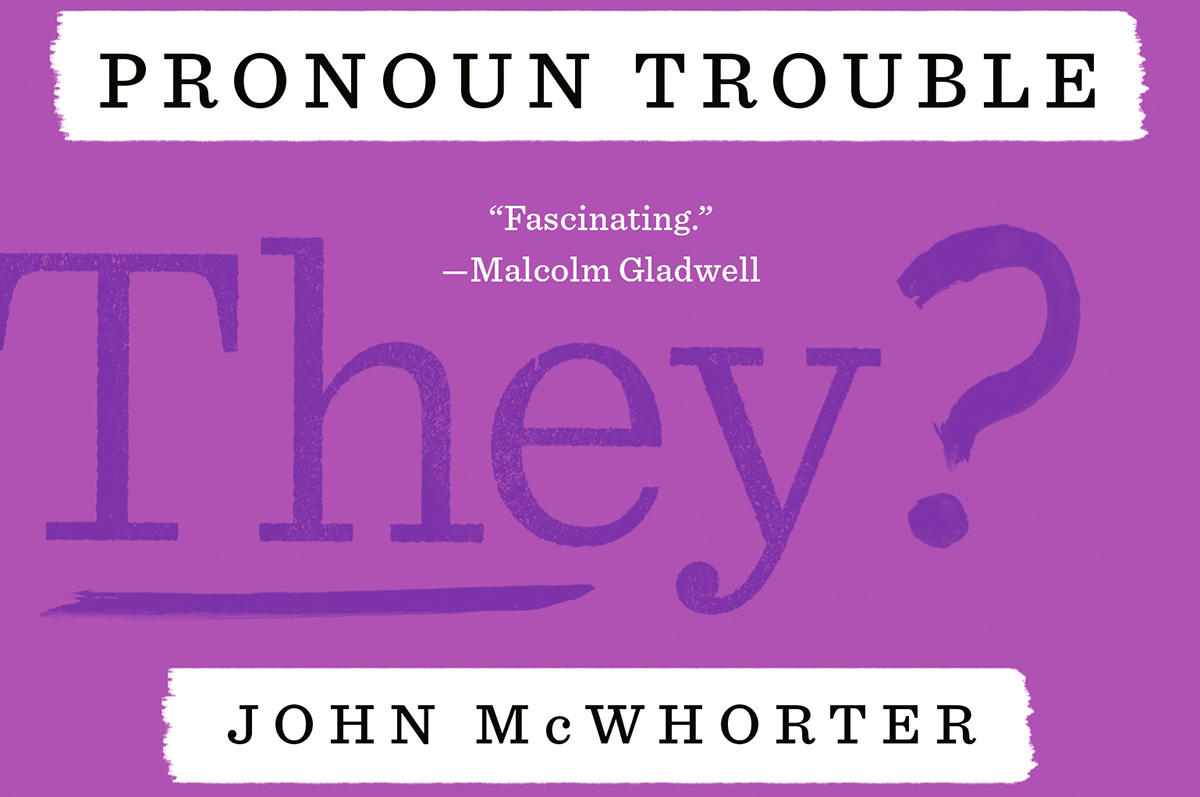
‘Pronoun Trouble’
By John McWhorter
c.2025, Avery
$28/240 pages
Punctuation matters.
It’s tempting to skip a period at the end of a sentence Tempting to overuse exclamation points!!! very tempting to MeSs with capital letters. Dont use apostrophes. Ask a question and ignore the proper punctuation commas or question marks because seriously who cares. So guess what? Someone does, punctuation really matters, and as you’ll see in “Pronoun Trouble” by John McWhorter, so do other parts of our language.

Conversation is an odd thing. It’s spontaneous, it ebbs and flows, and it’s often inferred. Take, for instance, if you talk about him. Chances are, everyone in the conversation knows who him is. Or he. That guy there.
That’s the handy part about pronouns. Says McWhorter, pronouns “function as shorthand” for whomever we’re discussing or referring to. They’re “part of our hardwiring,” they’re found in all languages, and they’ve been around for centuries.
And, yes, pronouns are fluid.
For example, there’s the first-person pronoun, I as in me and there we go again. The singular I solely affects what comes afterward. You say “he-she IS,” and “they-you ARE” but I am. From “Black English,” I has also morphed into the perfectly acceptable Ima, shorthand for “I am going to.” Mind blown.
If you love Shakespeare, you may’ve noticed that he uses both thou and you in his plays. The former was once left to commoners and lower classes, while the latter was for people of high status or less formal situations. From you, we get y’all, yeet, ya, you-uns, and yinz. We also get “you guys,” which may have nothing to do with guys.
We and us are warmer in tone because of the inclusion implied. She is often casually used to imply cars, boats, and – warmly or not – gay men, in certain settings. It “lacks personhood,” and to use it in reference to a human is “barbarity.”
And yes, though it can sometimes be confusing to modern speakers, the singular word “they” has been a “shape-shifter” for more than 700 years.
Your high school English teacher would be proud of you, if you pick up “Pronoun Trouble.” Sadly, though, you might need her again to make sense of big parts of this book: What you’ll find here is a delightful romp through language, but it’s also very erudite.
Author John McWhorter invites readers along to conjugate verbs, and doing so will take you back to ancient literature, on a fascinating journey that’s perfect for word nerds and anyone who loves language. You’ll likely find a bit of controversy here or there on various entries, but you’ll also find humor and pop culture, an explanation for why zie never took off, and assurance that the whole flap over strictly-gendered pronouns is nothing but overblown protestation. Readers who have opinions will like that.
Still, if you just want the pronoun you want, a little between-the-lines looking is necessary here, so beware. “Pronoun Trouble” is perfect for linguists, writers, and those who love to play with words but for most readers, it’s a different kind of book, period.
The Blade may receive commissions from qualifying purchases made via this post.
Books
New book helps vulnerable people to stay safe
‘The Cost of Fear’
By Meg Stone
c.2025, Beacon Press
$26.95/232 pages
The footsteps fell behind you, keeping pace.
They were loud as an airplane, a few decibels below the beat of your heart. Yes, someone was following you, and you shouldn’t have let it happen. You’re no dummy. You’re no wimp. Read the new book, “The Cost of Fear” by Meg Stone, and you’re no statistic. Ask around.

Query young women, older women, grandmothers, and teenagers. Ask gay men, lesbians, and trans individuals, and chances are that every one of them has a story of being scared of another person in a public place. Scared – or worse.
Says author Meg Stone, nearly half of the women in a recent survey reported having “experienced… unwanted sexual contact” of some sort. Almost a quarter of the men surveyed said the same. Nearly 30 percent of men in another survey admitted to having “perpetrated some form of sexual assault.”
We focus on these statistics, says Stone, but we advise ineffectual safety measures.
“Victim blame is rampant,” she says, and women and LGBTQ individuals are taught avoidance methods that may not work. If someone’s in the “early stages of their careers,” perpetrators may still hold all the cards through threats and career blackmail. Stone cites cases in which someone who was assaulted reported the crime, but police dropped the ball. Old tropes still exist and repeating or relying on them may be downright dangerous.
As a result of such ineffectiveness, fear keeps frightened individuals from normal activities, leaving the house, shopping, going out with friends for an evening.
So how can you stay safe?
Says Stone, learn how to fight back by using your whole body, not just your hands. Be willing to record what’s happening. Don’t abandon your activism, she says; in fact, join a group that helps give people tools to protect themselves. Learn the right way to stand up for someone who’s uncomfortable or endangered. Remember that you can’t be blamed for another person’s bad behavior, and it shouldn’t mean you can’t react.
If you pick up “The Cost of Fear,” hoping to learn ways to protect yourself, there are two things to keep in mind.
First, though most of this book is written for women, it doesn’t take much of a leap to see how its advice could translate to any other world. Author Stone, in fact, includes people of all ages, genders, and all races in her case studies and lessons, and she clearly explains a bit of what she teaches in her classes. That width is helpful, and welcome.
Secondly, she asks readers to do something potentially controversial: she requests changes in sentencing laws for certain former and rehabilitated abusers, particularly for offenders who were teens when sentenced. Stone lays out her reasoning and begs for understanding; still, some readers may be resistant and some may be triggered.
Keep that in mind, and “The Cost of Fear” is a great book for a young adult or anyone who needs to increase alertness, adopt careful practices, and stay safe. Take steps to have it soon.
The Blade may receive commissions from qualifying purchases made via this post.
Books
A taste for the macabre with a side order of sympathy
New book ‘The Lamb’ is for fans of horror stories
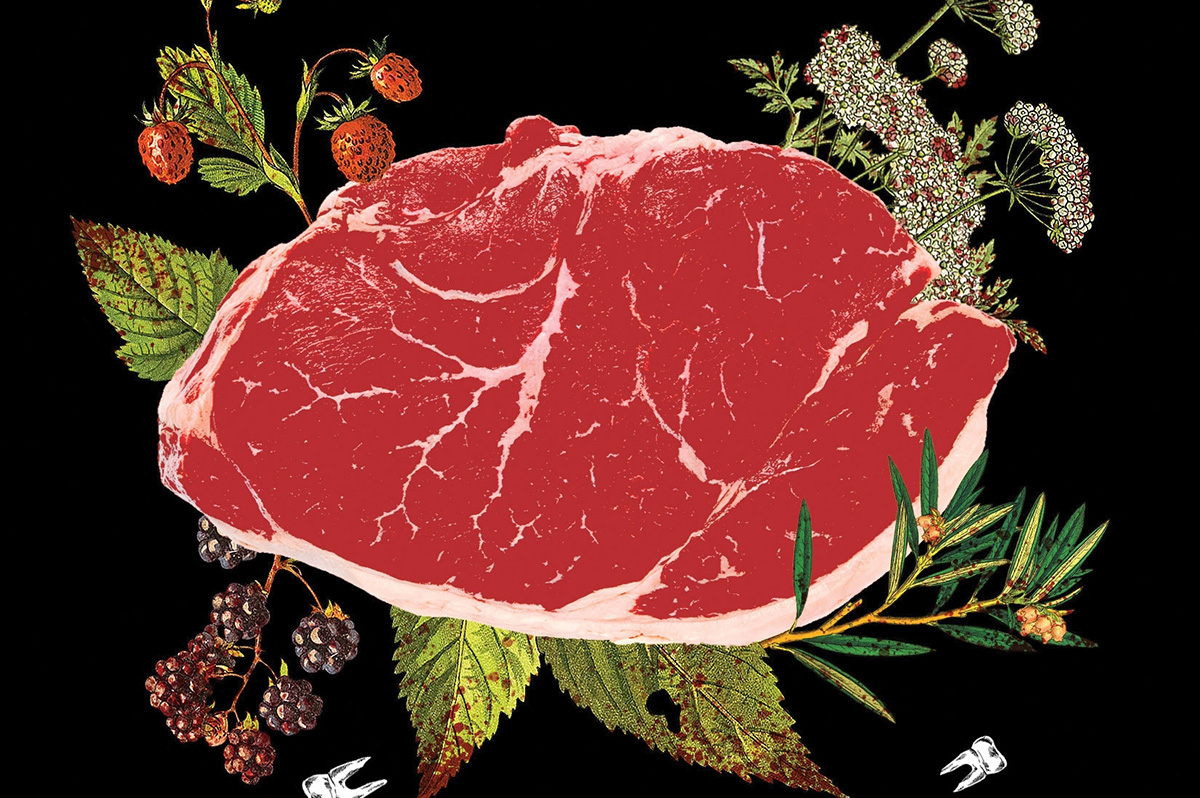
‘The Lamb: A Novel’
By Lucy Rose
c.2025, Harper
$27.99/329 pages
What’s for lunch?
You probably know at breakfast what you’re having a few hours later. Maybe breast of chicken in tomato sauce. Barbecued ribs, perhaps? Leg of lamb, beef tongue, pickled pigs’ feet, liver and onions, the possibilities are just menus away. Or maybe, as in the new book, “The Lamb” by Lucy Rose, you’ll settle for a rump roast and a few lady fingers.

Margot was just four years old when she noticed the mold on the shower walls, and wondered what it might taste like. She also found fingers in the shower drain from the last “stray,” the nails painted purple, and she wondered why they hadn’t been nibbled, too.
Cooked right, fingers and rumps were the best parts.
Later, once Margot started school, Mama depended on her to bring strays from the woods to their cottage, and Mama would give them wine and warm them up. She didn’t often leave the house unless it was to bury clothing and bones, but she sometimes welcomed a gardener who was allowed to leave. There was a difference, you see, between strays and others.
But Eden? Margot couldn’t quite figure her out.
She actually liked Eden, who seemed like a stray but obviously wasn’t. Eden was pretty; she never yelled at Margot, although she did take Margot’s sleeping spot near Mama. Eden made Mama happy; Margot could hear them in the bedroom sometimes, making noises like Mama did when the gardener visited. Eden was a very good cook. She made Mama softer, and she made promises for better times.
And yet, things never got better. Margot was not supposed to call attention to herself, but she wanted friends and a real life. If she was honest, she didn’t want to eat strays anymore, either, she was tired of the pressure to bring home dinner, and things began to unravel. Maybe Mama didn’t love Margot anymore. Maybe she loved Eden better or maybe Mama just ached from hunger.
Because you know what they say: two’s company, three’s a meal.
Not a book to read at lunch? No, probably not – although once you become immersed in “The Lamb,” it’ll be easy to swallow and hard to put down.
For sure, author Lucy Rose presents a somewhat coming-of-age chiller with a gender-twisty plot line here, and while it’s occasionally a bit slow and definitely cringey, it’s also really quite compelling. Rose actually makes readers feel good about a character who indulges in something so entirely, repulsively taboo, which is a very surprising – but oddly satisfying – aspect of this unique tale. Readers, in fact, will be drawn to the character Margo’s innocence-turned-eyes-wide-open and it could make you grow a little protective of her as she matures over the pages. That feeling plays well inside the story and it makes the will-they-won’t-they ending positively shivery.
Bottom line, if you have a taste for the macabre with a side order of sympathy, then “The Lamb” is your book and don’t miss it. Fans of horror stories, this is a novel you’ll eat right up.
The Blade may receive commissions from qualifying purchases made via this post.
Books
‘Cleavage’ explores late-in-life transition
An enjoyable collection of work from a born storyteller
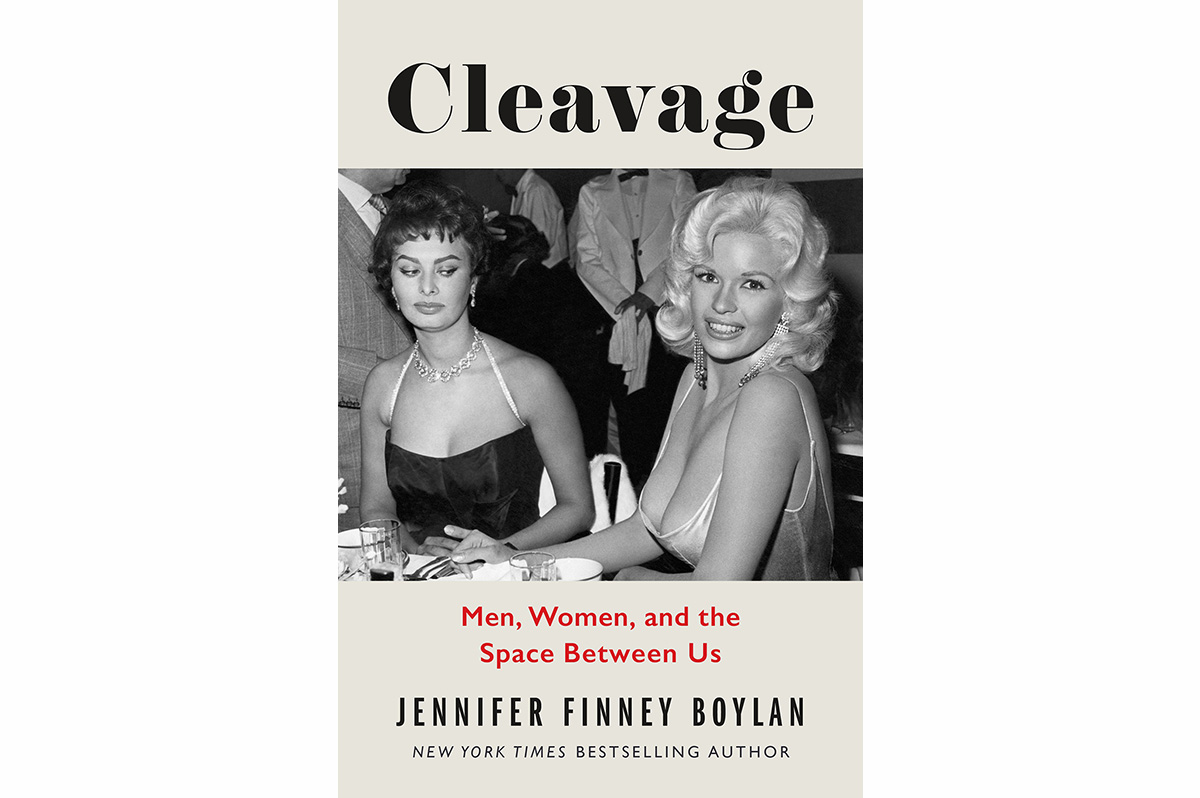
‘Cleavage: Men, Women, and the Space Between Us’
By Jennifer Finney Boylan
c.2025, Celadon Books
$29/256 pages
When it came to friends and family, your cup used to runneth over.
You had plenty of both and then, well, life and politics wedged an ocean-sized chasm between you and it makes you sad. And yet – are you really all that far apart? As in the new memoir, “Cleavage” by Jennifer Finney Boylan, maybe you’re still two peas in a pod.

Once upon a time not so long ago, Jennifer Finney Boylan was one of “a group of twelve-year-old Visigoths” intent on mischief. They hung around, did normal boy stuff, setting off rockets, roughhousing, roaming, rambling, and bike-riding. The difference between Boylan and the other boys in her group was that Jim Boylan knew she was really a girl.
Then, she vowed that it was a “secret no soul would ever know,” and James went to college, enjoyed a higher metabolism, dated, fell in love too easily, then married a woman and fathered two boys but there was still that tug. Boylan carried the child she once was in her heart – “How I loved the boy I’d been!” – but she was a woman “on the inside” and saying it aloud eventually became critical.
Boylan had a hard talk with her wife, Deedie, knowing that it could be the end of their marriage. She’s eternally grateful now that it wasn’t.
She’s also grateful that she became a woman when she did, when politics had little to do with that personal decision. She worries about her children, one who is trans, both of whom are good, successful people who make Boylan proud. She tries to help other trans women. And she thinks about the words her mother often said: “Love will prevail.”
“Our lives are not a thing to be ashamed of,” Boylan says, “or apologized for, or explained. Our lives are a thing of wildness, and tenderness, and joy.”
Judge “Cleavage” by its cover, and you might think you’ll get a primer on anatomy. Nope, author Jennifer Finney Boylan only has one chapter on the subject, among many. Instead, she leans heavily on her childhood and her transition rather late in life, her family, and her friends to continue where her other books left off, to update, correct, and to share her thoughts on that invisible division. In sum, she guesses that “a huge chunk of the population… still doesn’t understand this trans business at all.”
Let that gentle playfulness be a harbinger of what you’ll read: some humor about her journey, and many things that might make your heart hurt; self-inspection that seems confidential and a few oh-so-deliciously well-placed snarks; and memories that, well told and satisfying, are both nostalgic and personal from “both the Before and the After.”
This book has the feel of having a cold one with a friend and Boylan fans will devour it. It’s also great for anyone who is trans-curious or just wants to read an enjoyable collection of work from a born storyteller. No matter what you want from it, what you’ll find in “Cleavage” is a treasure chest.
The Blade may receive commissions from qualifying purchases made via this post.
Books
From genteel British wealth to trans biker
Memoir ‘Frighten the Horses’ a long but essential read

‘Frighten the Horses: A Memoir’
By Oliver Radclyffe
c.2024, Roxane Books/Grove Atlantic
$28/352 pages
Finding your own way.
It’s a rite of passage for every young person, a necessity on the path to adulthood. You might have had help with it. You might have listened to your heart alone on the quest to find your own way. And sometimes, as in the new memoir, “Frighten the Horses” by Oliver Radclyffe, you may have to find yourself first.

If you had observed Oliver Radclyffe in a random diner a few years ago, you’d have seen a blonde, bubbly, but harried mother with four active children under age seven and a distracted husband. You probably wouldn’t have seen trouble, but it was there.
“Nicky,” as Radclyffe was known then, was simmering with something that was just coming to the forefront.
As a young child, Nicky’d been raised in comfort in a family steeped in genteel British wealth, attended a private all-girl’s school, and never wanted for anything. She left all that behind as a young adult, and embraced the biker lifestyle and everything it entailed. The problem now wasn’t that she missed her old ways; it was that she hated life as a wife and mother. Her dreams were filled with fantasies of “exactly who I was: a man on a motorbike, in love with a woman.”
But being a man? No, that wasn’t quite right.
It took every bit of courage she had to say she was gay, that she thought constantly about women, that she hated sex with men. When she told her husband, he was hurt but mostly unbothered, insisting that she tell absolutely no one. They could remain married and just go forward. Nothing had to change.
But everything had already changed for Nicky.
Once she decided finally to come out, she learned that friends had already suspected. Family was supportive. It would be OK. But as Nicky began to experiment with a newfound freedom to be with women, one thing became clear: having sex with a woman was better when she imagined doing it as a man.
In his opening chapter, author Oliver Radclyffe shares an anecdote about the confusion the father of Radclyffe’s son’s friend had when picking up the friend. Readers may feel the same sentiment.
Fortunately, “Frighten the Horses” gets better — and it gets worse. Radclyffe’s story is riveting, told with a voice that’s distinct, sometimes poker-faced, but compelling; you’ll find yourself agreeing with every bit of his outrage and befuddlement with coming out in a way that feels right. When everything falls into place, it’s a relief for both author and reader.
And yet, it’s hard to get to this point because this memoir is just too long. It lags where you’ll wish it didn’t. It feels like being burrito-wrapped in a heavy-weighted blanket: You don’t necessarily want out, but you might get tired of being in it.
Still, it remains that this peek at transitioning, however painful, is essential reading for anyone who needs to understand how someone figures things out. If that’s you, then consider “Frighten the Horses” and find it.
Books
‘Radiant’ an illuminating biography of Keith Haring
Author captures artist’s complexities in sympathetic new book
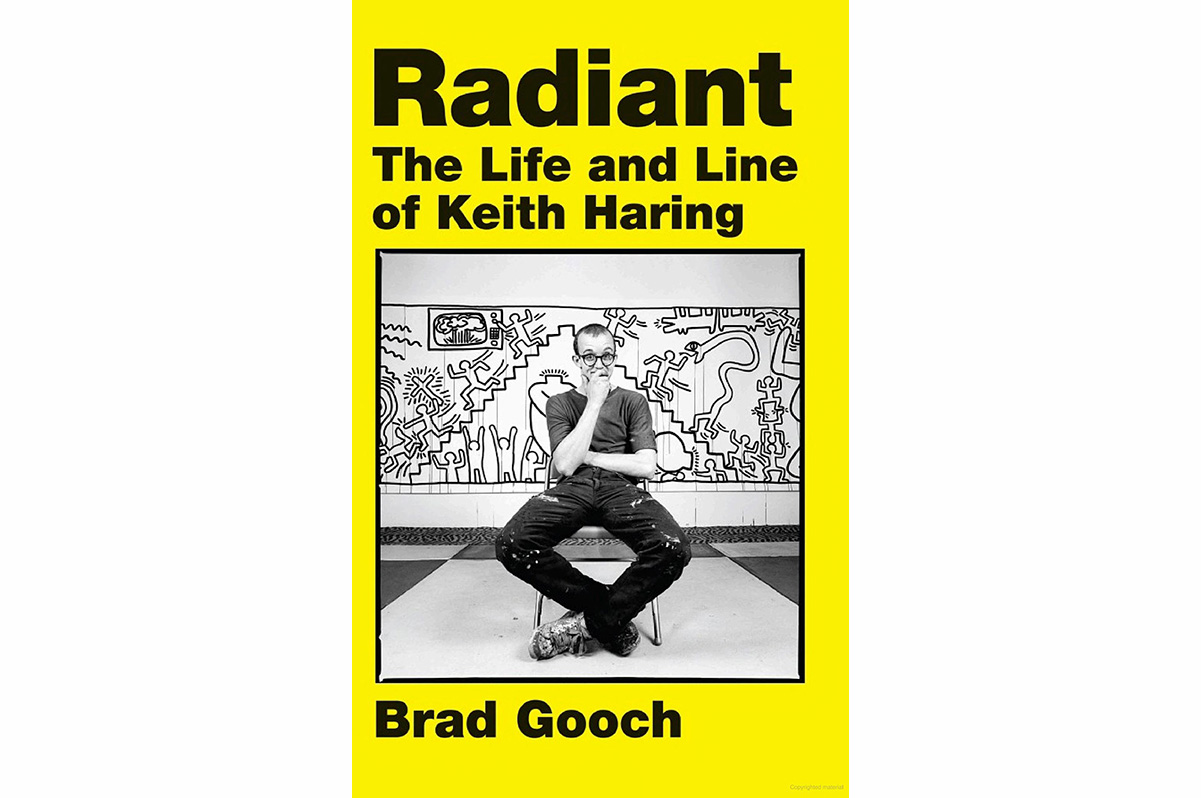
‘Radiant: The Life and Line of Keith Haring’
By Brad Gooch
c.2024, Harper
$20/502 pages
“Radiant” is an illuminating biography of the talented artist Keith Haring, who made his indelible mark during the 1980s before dying young of AIDS. Brad Gooch, biographer of poets Frank O’Hara and Rumi, follows Haring from his childhood in Kutztown, Pa., to his early days in New York City painting artistic graffiti, to his worldwide fame and friendships with Andy Warhol and Jean-Michel Basquiat.

The eldest of three children and the only boy, Haring learned to draw early on from his father. Art quickly became a lasting obsession, which he pursued fiercely. Growing up in a small, conservative town, he was drawn to countercultural movements like hippies and religious “Jesus freaks,” although he mostly found the imagery and symbols appealing.
He studied commercial art in Pittsburgh but later dropped out, spending several years working and learning at the Pittsburgh Arts and Crafts Center, before moving to New York City in 1978. Studying painting at the School for Visual Arts, he also learned about video and performance art, making interesting projects. He also began drawing images on subways and blank advertisement backboards. One of his most distinctive was the Radiant Baby, a crawling baby shooting rays of light.
Gooch begins the biography with his own encounter with this public art, which felt colorful and “extremely urgent.” It had to be done guerilla-style, before the authorities could catch him, and they were frequently painted over. He was arrested a few times.
Ironically, a few years later Haring would be paid huge sums and flown around the world to create large-scale art on public property. People were amazed at how quickly he worked, even in terrible conditions. Sometimes at these events, while a crowd was gathered, he would draw and give away the artwork. Knowing that his art in galleries sold for incredible amounts, he enjoyed occasionally frustrating the art world’s commercial desires.
His Pop Shops also revealed Haring’s competing impulses. Opened in 1986, first in New York and later in Tokyo, they put his art on all sorts of merchandise, including T-shirts and posters. On the one hand, they allowed ordinary people to buy his work at reasonable prices. However, they also earned him more money and increased his public image.
He made art for everyone. His best-known pieces, featuring babies and dogs, are colorful and family friendly. Some even consider it “lightweight.” He eagerly created murals and artwork for elementary schools and neighborhoods. But he also made art with social and political commentary and sexual explicitness. “Michael Stewart – USA for Africa” depicts a graffiti artist’s strangulation by New York City Transit Police officers. He painted “Once Upon a Time…” for the men’s bathroom of New York City’s Lesbian & Gay Community Center.
Haring worked nearly right up to his death in 1990. The Keith Haring Foundation keeps his work in the public eye, while also funding nonprofits working with disadvantaged youth and AIDS education. Gooch captures Haring’s complexities; he befriended graffiti artists of color and dated working-class men, but was sometimes ignorant about how his wealth and fame affected these relationships. Well written and sympathetic, the book can sometimes overwhelm in detail about life in the 80’s and Haring’s celebrity friends.
Books
New book is a fun whodunit set in London drag world
‘Murder in the Dressing Room’ will keep readers guessing
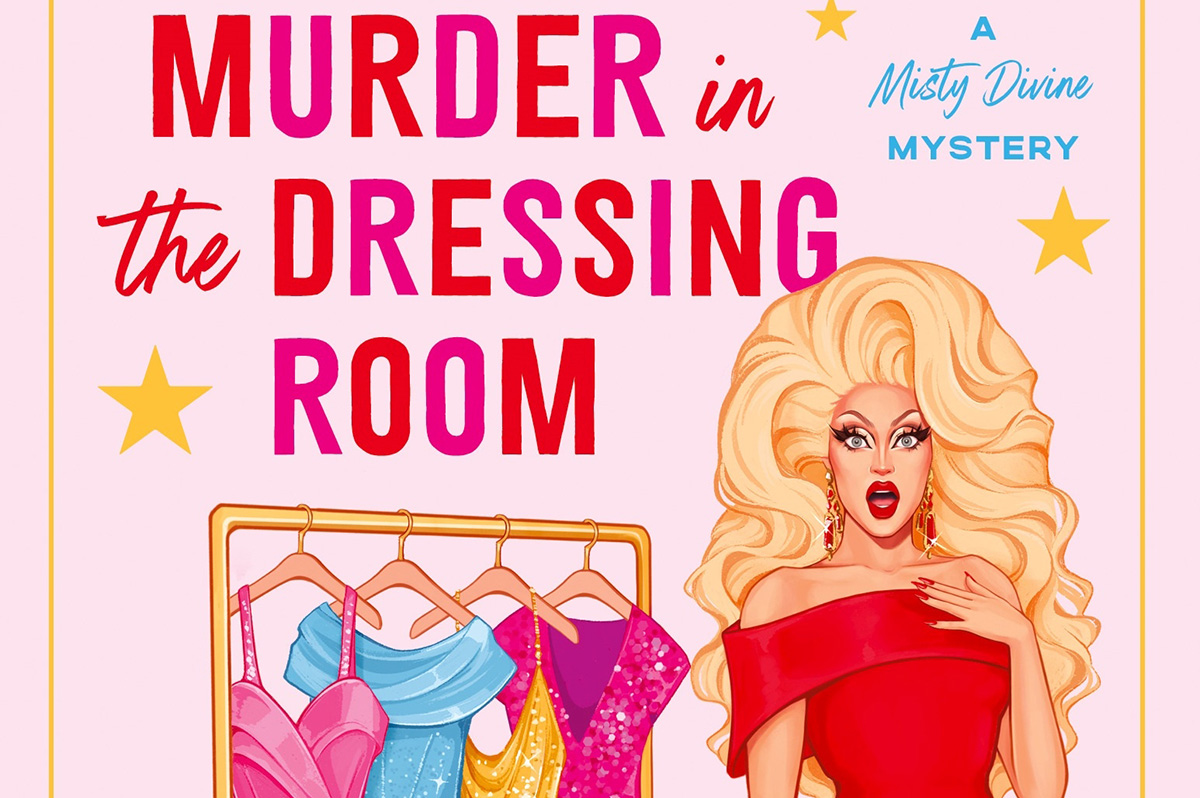
‘Murder in the Dressing Room’
By Holly Stars
c.2025, Berkeley
$19/368 pages
Your alter ego, the other half of your double life, is a superhero.
When you’re quiet, she’s boisterous. Your confidence is flat, hers soars. She’s a better dresser than you; she’s more popular, and maybe even a little smarter. By day, you live a normal existence but by night, your other side roars and in the new mystery, “Murder in the Dressing Room” by Holly Stars, both of you solve crimes.

Lady Lady had been a little off all evening.
As owner of London’s most fabulous, elegant drag club, she was usually in command but her protegee, Misty Devine, could tell that something was wrong.
She discovered how wrong when she found Lady Lady on her dressing room floor, foaming at the mouth, dead, poisoned by a mysterious box of chocolates.
Hours later, Misty de-dragged, morphing from an elegant woman to an ordinary, binary hotel employee named Joe who was heartbroken by the tragedy. Only employees had access to Lady Lady’s dressing room – ergo, someone they knew at the club had to be the killer.
Obviously, the London detectives assigned to the case had a suspect list, but Misty/Joe and their boyfriend Miles knew solving Lady Lady’s murder was really up to them. They knew who the killer wasn’t, but who had reason to kill Misty’s mentor?
Maybe Mandy, the club’s co-owner. The club’s bartender and bouncer were both sketchy. Lady Lady had spats with two employees and a former co-worker, but was that motive enough? When the dress Lady Lady was wearing that night proved to have been valuable stolen goods, Joe’s investigation list grew to include people who might have sneaked backstage when no one was paying attention, and a shady man who was suddenly following them around.
Then Misty learned that she was in Lady Lady’s will, and she figured the inheritance would be minor but she got a huge surprise. Lady Lady’s posthumous gift could make others think that Misty might’ve had reason to kill her.
And just like that, the suspect list gained another entry.
When you first get “Murder in the Dressing Room” in your hands, hang onto it tight. It’s fun, and so fluffy and light that it might float away if you’re not careful.
The story’s a little too long, as well, but there’s enjoyment to be had here, and authenticity enough to hold a reader’s attention. Author Holly Stars is a drag performer in London and somewhat of a murder maven there, which gives her insight into books of this genre and the ability to string readers along nicely with solid characters. If you’re unfamiliar with the world of drag you’ll also learn a thing or two while you’re sleuthing through the story; drag queens and kings will like the dual tale, and the settings that anchor it.
As a mystery, this is fun and different, exciting, but tame enough for any adult reader. If you love whodunits and you want something light, “Murder in the Dressing Room” is a double delight.
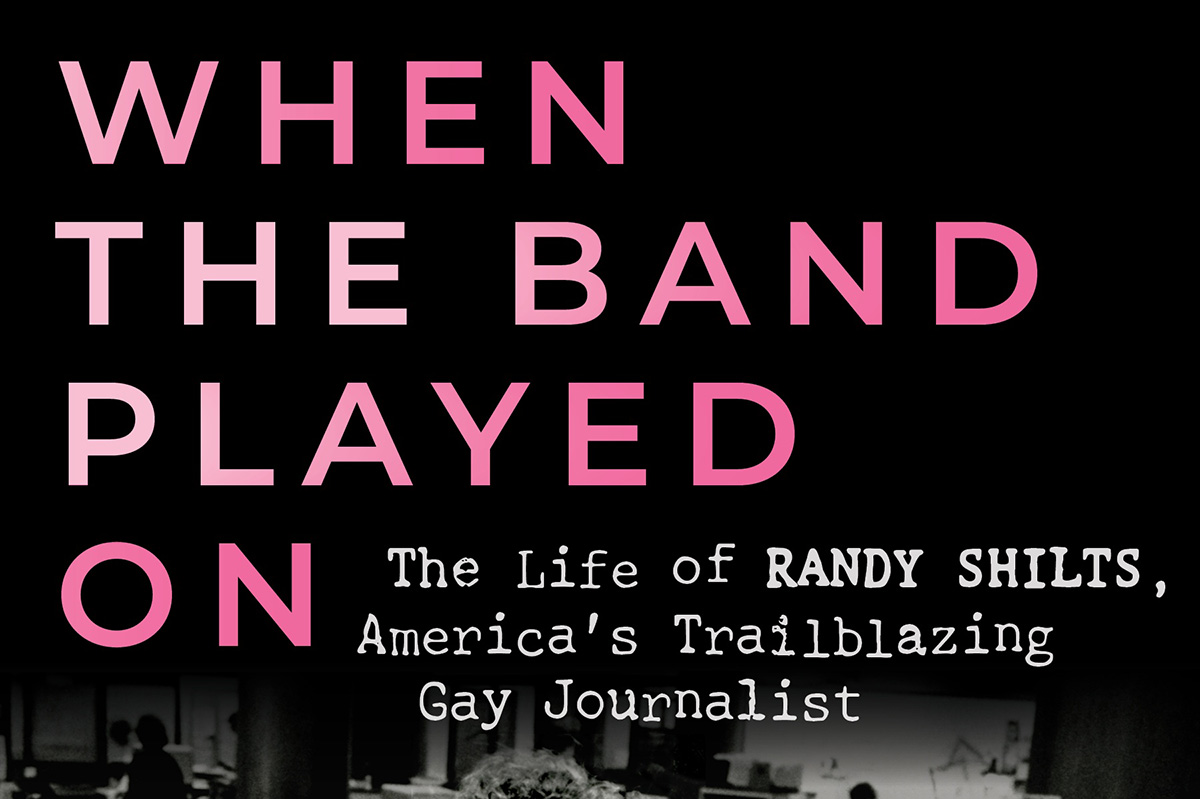
‘When the Band Played On’
By Michael G. Lee
c.2025, Chicago Review Press
$30/282 pages
You spent most of your early career playing second fiddle.
But now you’ve got the baton, and a story to tell that people aren’t going to want to hear, though it’s essential that they face the music. They must know what’s happening. As in the new book “When the Band Played On” by Michael G. Lee, this time, it’s personal.

Born in 1951 in small-town Iowa, Randy Shilts was his alcoholic, abusive mother’s third of six sons. Frustrated, drunk, she reportedly beat Shilts almost daily when he was young; she also called him a “sissy,” which “seemed to follow Randy everywhere.”
Perhaps because of the abuse, Shilts had to “teach himself social graces,” developing “adultlike impassiveness” and “biting sarcasm,” traits that featured strongly as he matured and became a writer. He was exploring his sexuality then, learning “the subtleties of sexual communication,” while sleeping with women before fully coming out as gay to friends.
Nearing his 21st birthday, Shilts moved to Oregon to attend college and to “allow myself love.” There, he became somewhat of an activist before leaving San Francisco to fully pursue journalism, focusing on stories of gay life that were “mostly unknown to anyone outside of gay culture.”
He would bounce between Oregon and California several times, though he never lost sight of his writing career and, through it, his activism. In both states, Shilts reported on gay life, until he was well known to national readers and gay influencers. After San Francisco supervisor Harvey Milk was assassinated, he was tapped to write Milk’s biography.
By 1982, Shilts was in love, had a book under his belt, a radio gig, and a regular byline in a national publication reporting “on the GRID beat,” an acronym later changed to AIDS. He was even under contract to write a second book.
But Shilts was careless. Just once, careless.
“In hindsight,” says Lee, “… it was likely the night when Randy crossed the line, becoming more a part of the pandemic than just another worried bystander.”
Perhaps not surprisingly, there are two distinct audiences for “When the Band Played On.” One type of reader will remember the AIDS crisis and the seminal book about it. The other is too young to remember it, but needs to know Randy Shilts’s place in its history.
The journey may be different, but the result is the same: author Michael G. Lee tells a complicated, still-controversial story of Shilts and the book that made America pay attention, and it’s edgy for modern eyes. Lee clearly shows why Shilts had fans and haters, why Shilts was who he was, and Lee keeps some mystery in the tale. Shilts had the knowledge to keep himself safe but he apparently didn’t, and readers are left to wonder why. There’s uncomfortable tension in that, and a lot of hypothetical thinking to be had.
For scholars of gay history, this is an essential book to read. Also, for anyone too young to remember AIDS as it was, “When the Band Played On” hits the right note.
The Blade may receive commissions from qualifying purchases made via this post.
Books
‘Hello Stranger’ unpacks the possibilities of flirting
Manuel Betancourt’s new book contains musings on modern intimacy
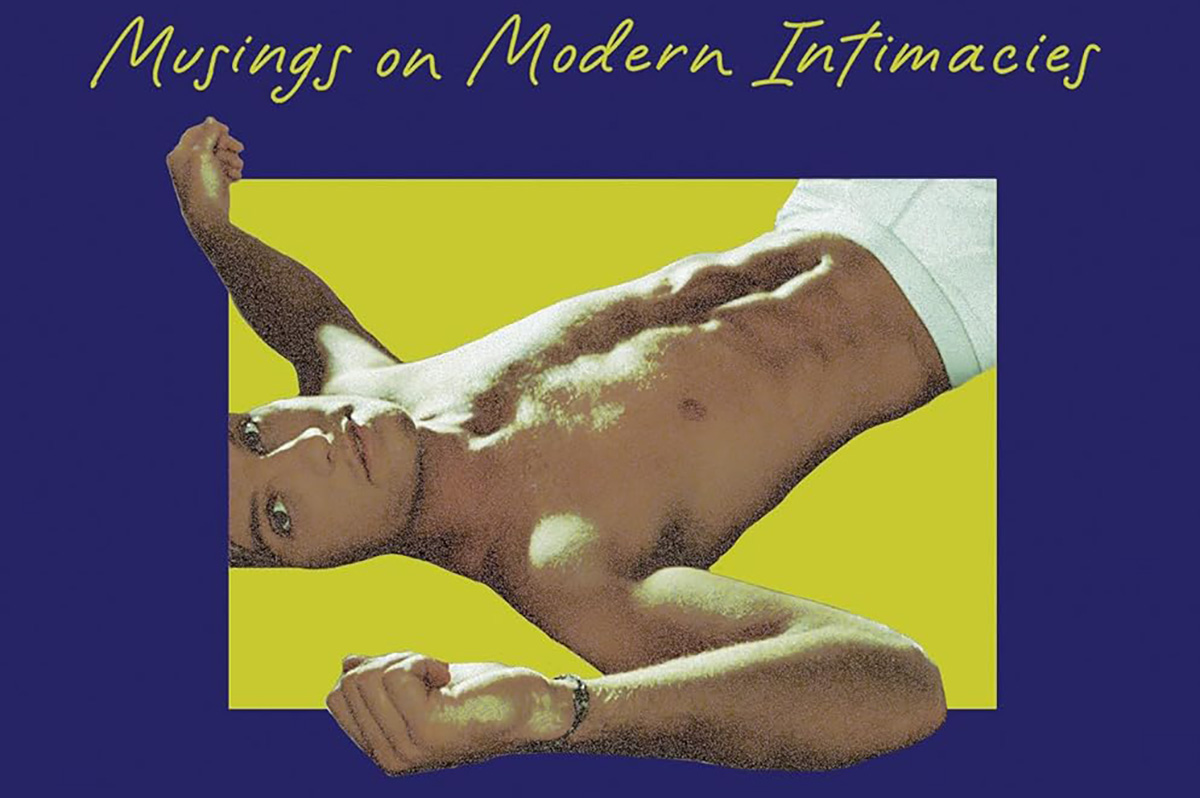
‘Hello Stranger: Musings on Modern Intimacies’
Published by Catapult
Available Jan. 14; hardcover $27
Two strangers lock eyes across a bar. Or maybe they reach for the same book on a shelf in a bookstore. Or maybe they’re a model and artist, exchanging nervous smiles as the artist tries to capture a piece of the model’s soul on canvas or film.
In a Hollywood film, we’d be led to believe that these moments are laden with momentous importance – a flicker of sexual charge and desire, a chemical reaction that leads inexorably to life-altering romance and happily ever after.
But in his new book of essays “Hello Stranger: Musings on Modern Intimacies,” queer Colombian film and culture critic Manuel Betancourt unpacks the notion that flirting needs to be anything more, suggesting that flirtation can be a worthwhile endeavor in itself.

“One of the things that if you read any kind of love story or watch any kind of rom-com, you’re constantly encouraged to think that flirtation is sort of like preamble to something else,” Betancourt tells me over cookies outside of Levain bakery in Larchmont.
“Actually, flirtation doesn’t need to do that. You can flirt just for the act of flirting, and that can be fun, and that can be great. What is it that you find instead in that moment of possibility, at that moment when anything can happen? Just what happens when you’re trying to be the best person you could be? It’s almost more exciting when you know, there’s nothing else on the horizon.”
But “Hello Stranger”isn’t a how-to guide to flirting. It’s more like a cross between cultural criticism and memoir.
Over a series of essays that alternate between examinations of flirting scenes in movies, books, and art, and anecdotes from his own personal life, Betancourt traces the ways that we use flirting to create different kinds of intimacies.
“This is not a how-to, because I don’t think gay men need help with that,” Betancourt says. “But I also know that I’m a gay man in Los Angeles whereas I know there are young folks in Ohio that may not think of it this way because they’ve been conditioned, and actually we now have such a breadth of gay literature and a culture that’s continually teaching us we need to find the one.”
The book is a deeply personal one for Betancourt, who recently got divorced from his husband and joined a polyamorous relationship as he began writing it.
“I’ve been thinking a lot about different intimacies with strangers, with friends, with lovers, things that fell outside of what we understand as traditional. And so it felt like an easy way to turn all of these things that I was dealing with on a personal level into a more cohesive and coherent project,” he says.
“I wanted to think through where the joy in flirtation lies. Like, why are we so drawn to it? Why was I so drawn to it? Why do I enjoy it so much? And of course, being the kind of literary academic that I was, I was willing to find other people must have thought about this, other people must have depicted it on screen and books,” he says. “Other people can teach me about this.”
The book starts with examinations of the fleeting, flirtatious intimacies seen in films like “Closer” and “Before Sunrise,” before diving into more complicated (and queer) relationships in the books “The Sexual Outlaw” and “A Little Life” and the portraiture of photographer Peter Hujar, using them as springboards to examine Betancourt’s own relationships to cruising, dating, nudity, and relationships both monogamous and otherwise.
“I wanted to begin with those straight, very common, understandable ways of thinking about these things, and then the book slowly gets clearer and we end in polyamory and conceptual monogamy, and these very different ways of thinking.
“What else I wanted to do for those gay readers that are maybe looking to find something here, is show that none of this is new. I think a lot of us try to think, like, ‘This is modern and polyamory is so 2024,’ but what I wanted to do is give a cultural history of that.”
Though it’s not an instruction manual, Betancourt says he did improve his own flirtation skills while researching the book, as evidenced in a spicy anecdote he recounts in the book about cruising a man in a hotel bar, where he was actually working on writing “Hello Stranger.”
“You just have to pay attention, open yourself up, which is also what Hollinghurst, writes in ‘The Swimming-Pool Library.’ His protagonist is able to like cruise and hook up anywhere he wants to in London, because he’s always looking, like literally looking. He’s constantly out seeing the world as if it’s a cruising playground and that is all apparently you need to do.
“If you’re crossing paths and you see someone who you’re attracted to and you lock eyes, that is the moment to make something happen and it’s about being open to the possibility and then also letting the other person know that you are.”
Nurturing that openness was difficult at first for Betancourt, due to his upbringing in Bogota, Colombia.
“For me it was a very different cultural thing because of the kind of culture of violence, the culture of unsafety in Colombia. You’re sort of encouraged to not really trust anyone,” he says. “It takes almost locking that away because you can’t approach any of those situations with fear.”
“This is about, like, teaching myself because I’m not great at it either. So, it’s about reminding myself, oh yeah, be open and more attentive.”
The Blade may receive commissions from qualifying purchases made via this post.

‘Cher: The Memoir Part One’
By Cher
c.2024, Dey St.
$36/413 pages
Mother knows best.
At least that’s what she’d like you to think because she said it a hundred times while you were growing up, until you actually believed. One day, though, if you were lucky, you learned that Mother didn’t always know best, but she did her best – like in the new book “Cher: The Memoir Part One” by Cher, when Mom helped make a star.

Though she doesn’t remember it, little Cheryl Sarkisian spent a few weeks in a Catholic Charities orphanage when she was tiny, because her father had disappeared and her mother couldn’t afford to take care of her. “Cheryl,” by the way, was the name on her birth certificate, although her mother meant to name her “Cherilyn.”
That first time wasn’t the last time little Cher was left with someone other than her mother, Jackie Jean, a beautiful, talented struggling singer-actress who’d been born into poverty and stayed there much of her life. When money was tight, she temporarily dropped her daughter off with friends or family, or the little family moved from house to house and state to state. Along the way, relocating in and out of California gave Cher opportunities to act, sing, and to learn the art of performance, which is what she loved best.
In the meantime, Jackie Jean married and married again, five or six husbands in all; she changed her name to Georgia, worked in the movies and on TV, and she gave Cher a little sister, moved the family again, landed odd jobs, and did what it took to keep the lights on.
As Cher grew up in the shadow of her glamorous mother, she gained a bit of glam herself, becoming sassy and independent, and prone to separation anxiety, which she blamed on her abandonment as a small child. In her mother’s shadow, she’d always been surrounded by movie and TV stars and, taking acting classes, she met even more.
And then she met Salvatore “Sonny” Bono, who was a friend before he was a lover. So, here’s the very, very happy surprise: “Cher: The Memoir Part One” is a downright fun book to read.
If you’ve ever seen author Cher in interviews or on late night TV, what you saw is what you get here: bald-faced truth, sarcastic humor, sass, and no pity-partying. She tells a good story, ending this book with her nascent movie career, and she leaves readers hanging in anticipation of the stories she’ll tell in her next book.
The other happy surprise is that this memoir isn’t just about her. Cher spends a good amount of the first half writing about her mother and her grandmother, both complicated women who fought to keep their heads and those of their offspring above water. Readers looking between the lines will be enthralled.
Surely, “Cher: The Memoir Part One” is a fan’s delight, but it’s also a great memoir for anyone who particularly loves the genre and doesn’t mind a bit of profanity. If that’s you, then you got this, babe.
The Blade may receive commissions from qualifying purchases made via this post.
-
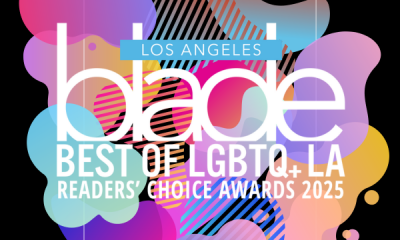
 Arts & Entertainment4 days ago
Arts & Entertainment4 days ago2025 Best of LGBTQ LA Finalist Voting
-
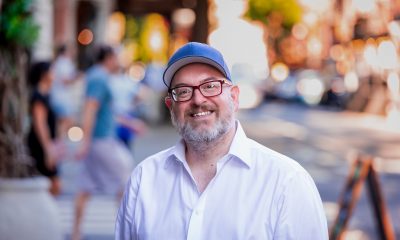
 Bars & Parties1 day ago
Bars & Parties1 day agoBear World Magazine gives the bear community a mighty roar
-
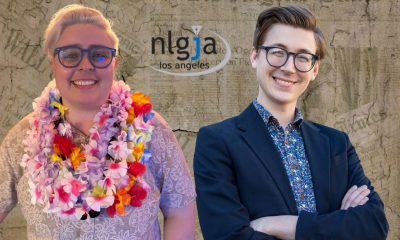
 Features2 days ago
Features2 days agoMeet the new co-presidents of the NLGJA LA Chapter
-

 a&e features2 days ago
a&e features2 days agoAnthony Nunziata Performs the Great Palm Springs Songbook
-
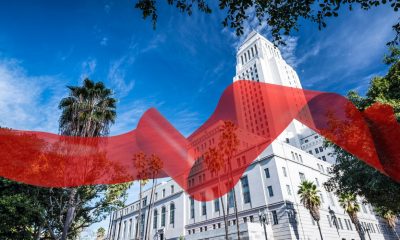
 Local4 days ago
Local4 days ago‘Housing Now!’: Advocates plan to wrap City Hall in red tape
-
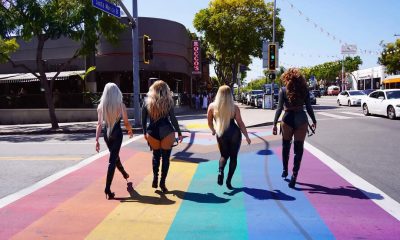
 Bars & Parties3 days ago
Bars & Parties3 days agoRocco’s 2.0 is looking to the past to celebrate the future
-
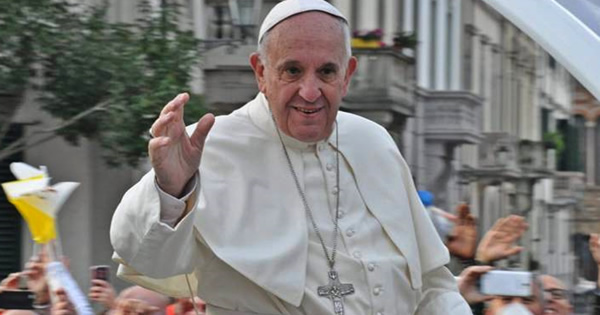
 Commentary3 days ago
Commentary3 days agoOn Pope Francis, Opus Dei and ongoing religious intolerance
-
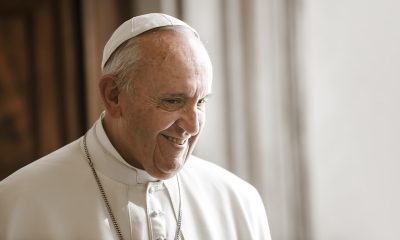
 The Vatican4 days ago
The Vatican4 days agoPope Francis dies at 88
-

 Congress2 days ago
Congress2 days agoDemocratic lawmakers travel to El Salvador, demand information about gay Venezuelan asylum seeker
-
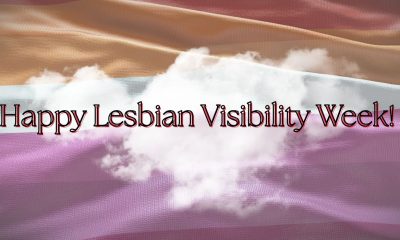
 Events1 day ago
Events1 day agoCelebrate Lesbian Visibility Week with The Curve Foundation
